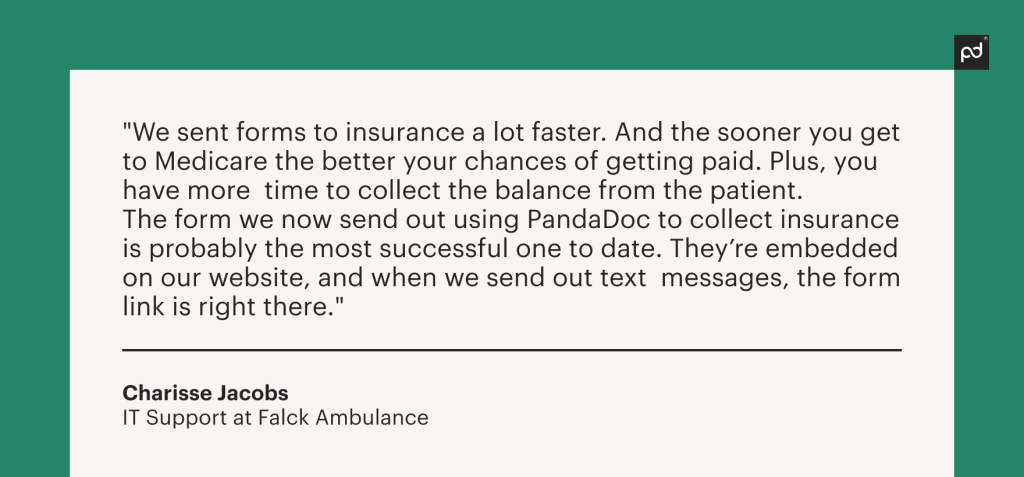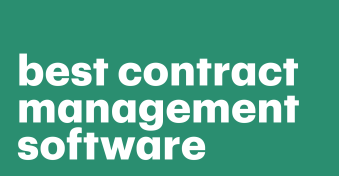Enterprise contracts are legally binding agreements between organizations and external parties or vendors, which govern various aspects of business relationships.
Managing these types of contracts is a critical part of business operations that requires careful attention and efficient processes.
They ensure compliance, minimize risks, and maximize value, so it’s vital that creating and implementing them goes as smoothly as possible.
Read on to take a look at the key aspects of managing enterprise contracts, including what they are and how they can benefit your business.
We’ll answer top questions like what is an enterprise wide contract? What are enterprise terms and conditions?
Who needs enterprise contract management software? And more!
Key takeaways
- What is an enterprise wide contract? Enterprise contracts are often used to govern crucial aspects of business relationships.
- Why are enterprise contracts used? They result in increased efficiency, better compliance and risk mitigation and improved collaboration.
- How do you manage enterprise contracts? Software which helps manage enterprise contracts is very beneficial for companies that deal with them in high volumes.

What are enterprise contracts?
Enterprise contracts are contractual agreements that organizations enter into with external parties, such as customers, suppliers, vendors, and business partners.
They outline the terms, conditions, rights, and obligations of those involved.
So, in short, they carry a great deal of weight.
Enterprise contracts can encompass a wide range of agreements, such as sales contracts and non-disclosure agreements.
They typically involve complex negotiations between multiple parties and can be long-term commitments.
They’re often used to govern critical aspects of business relationships.
Pricing, deliverables, timelines, responsibilities, intellectual property rights, confidentiality, and dispute resolution can all be included in enterprise contracts.
Essentially, enterprise contracts serve as validation for establishing and maintaining mutually beneficial relationships with external stakeholders.
Real world example of enterprise contract management
Let’s look at a quick example of enterprise contract management’s efficiency in action.
Autodesk, an international software company, sought a streamlined enterprise tool to enhance global communication and internal sales processes, particularly integrating seamlessly with Salesforce.
Facing issues of duplicate tasks and data gaps, they aimed to become more customer-focused and sought a solution to centralize document management, provide tracking and reporting, ensure adoption, and scale effectively for over 300 new users.
The innovative software leader turned to PandaDoc after encountering scalability issues with their in-house solution.
With PandaDoc, they streamlined content creation, optimized templates, and accelerated document production, revolutionizing their sales communication process.

Who needs enterprise contract management software?
Enterprise contract management software is beneficial for organizations across various industries that deal with a significant volume of contracts.
The types of businesses that may benefit from maintenance contract management software, for example, include:
Large corporations with multiple divisions
Enterprises dealing with a high volume of contracts and complex contract structures require robust software to manage their contract processes efficiently.
This software can help streamline contract creation, negotiation, approval workflows, and contract lifecycle management.
Small and medium-sized businesses (SMBs)
Small and medium-sized businesses can lack dedicated legal departments or resources for managing contracts.
Contract management software can solve this problem as it provides a centralized platform to organize and analyze contracts effectively.
This improves efficiency, reduces errors, and ensures contract compliance.
Government agencies
Government entities regularly negotiate contracts for various purposes, such as procurement, public-private partnerships, and services.
Contract management software ensures transparency, compliance, and accountability in government contract processes.
It facilitates better contract governance, easier auditing, and improved reporting.
Legal departments
Some law firms and legal departments might also benefit from contract management software.
This can help them automate routine tasks, ensure compliance, and improve collaboration among legal teams within the business.
Overall, it can enhance productivity and reduce legal risks, which can be extremely beneficial.
Key elements in creating enterprise contracts
Creating effective enterprise contracts requires several key elements, such as:
Clear and concise language
Contracts should be written using clear and concise language, which means avoiding complex legal jargon.
If it must be used, there should be an index to explain the meaning of such terms in plain English.
The use of plain language ensures all parties involved can easily understand their rights, obligations, and the terms of the agreement.
This minimizes the potential for misunderstandings and disputes.
Specificity and completeness
Enterprise contracts should be specific and leave no room for ambiguity.
They should address all relevant aspects of the agreement, including pricing, payment terms, and deliverables.
Being specific ensures expectations are clearly defined and helps avoid potential conflicts.
Legal compliance
It goes without saying that an enterprise agreement must comply with applicable laws, regulations, and industry standards.
It’s essential to involve legal experts to review it and ensure compliance with relevant legal requirements.
Risk assessment and mitigation
Enterprise contracts should identify and address potential risks and liabilities.
Parties should conduct a thorough risk assessment to pinpoint contractual risks.
Provisions for risk allocation, limitations of liability, and termination clauses should all be included.
Scalability and flexibility
Contracts should be designed to accommodate future changes and evolving business needs as the organization expands.
This includes provisions for things like contract amendments, extensions, and termination.
Flexibility allows parties to renegotiate terms as needed without jeopardizing the overall agreement.
Enterprise contract lifecycle management (CLM) benefits
Implementing contract lifecycle management (CLM) practices and utilizing dedicated CLM software offers numerous benefits to organizations, including:
Increased efficiency
Contract lifecycle management streamlines the contract management process by automating many tasks that are otherwise time-consuming for employees.
Processes such as contract creation, negotiation, approval workflows, and renewal management can all be accomplished using CLM software.
This reduces manual errors, enhances productivity, and enables faster turnaround times.
Automated reminders and notifications ensure timely actions and reduce contract cycle times.
Improved visibility
CLM provides a centralized repository for storing and accessing contracts.
This makes it easier to monitor contract status, access key dates, and view obligations.
It ensures transparency, accountability, and proactive management of contractual commitments.
Centralized contract data allows stakeholders to access information and make informed decisions quickly.
Compliance and risk mitigation
CLM also helps organizations ensure compliance with legal and regulatory requirements, reducing the risk of contract breaches and penalties.
Contract management software enables them to enforce standard contract clauses and ensures consistent compliance with legal and regulatory frameworks.
Improved collaboration and communication
CLM promotes collaboration and seamless communication among stakeholders involved in the contract process.
It allows real-time collaboration, document sharing, and version control, encouraging better engagement and alignment across departments.
Data-driven milestone alerts
Another contract lifecycle management benefit is that it generates valuable analytics and reports, providing organizations with actionable insights into contract performance, trends, risks, and opportunities.
These insights can drive strategic decision-making and negotiation strategies.
Businesses can identify opportunities for cost savings, improve contract terms, and negotiate more favorable agreements based on this data.
Best practices for enterprise contracts
Here are some best practices for enterprise contracts.
Standardize contract templates
Develop standardized contract templates that incorporate legal and business requirements.
This ensures consistency and reduces drafting time, minimizing errors when contracts are created.
Standardized templates also help maintain brand identity and adherence to corporate policies.
Establish a contract review and approval process
Implement a defined process for contract review and approval.
This ensures that contracts undergo proper scrutiny and align with the organization’s objectives.
Clear approval workflows help in contract processing and avoid delays.
Implement contract visibility and tracking mechanisms
Utilize contract management software to track key contract data, such as expiration dates, renewal options, and performance milestones.
Contract management software provides a single source of truth for contracts, ensuring easy accessibility and reducing the risk of misplaced or outdated contracts.
Train contract managers and stakeholders
Provide training to contract managers and relevant stakeholders on best practices.
You should also teach them how to use contract management software efficiently.
Training ensures individuals involved in the contract process understand their roles and responsibilities and can effectively utilize the tools available.
Regularly review and update contracts
Conduct regular contract reviews to assess contract performance and identify potential risks and opportunities for improvement.
You should update contracts as needed to reflect changing business requirements, legal regulations, and industry standards.
Regular reviews help identify outdated clauses, adjust terms, and ensure ongoing alignment with organizational objectives.
Enterprise contracts: A step-by-step guide
To implement these best practices when creating your enterprise contracts, businesses should do the following.

1. Assess contract management needs
Begin by evaluating existing contract management processes.
This means identifying pain points and defining the organization’s contract management requirements.
Determine the complexity of contracts to select appropriate contract management software.
Consider factors such as contract volume and complexity, integration requirements, and budget constraints.
2. Choose the right contract management software
Research and select a contract management software solution that aligns with your business requirements.
Consider features such as contract creation, approval workflows, search capabilities, analytics, and integrations with other systems.
Think about other factors that make it easier for employees and customers, such as user-friendliness, customization options, security measures, and customer support.
Given the nature of the software, it’s easy to see why sales contract management software has to put the customer first.
3. Establish contract management policies and procedures
Develop clear policies and procedures for contract management, including guidelines for contract creation, negotiation, approval, storage, and reporting.
Ensure these policies align with legal and compliance requirements.
Standardized policies and procedures promote consistency and facilitate efficient contract management.
4. Implement the contract management software
Roll out your selected contract management software within the organization.
You may also be able to integrate it with your existing business tools.
Train users on how to effectively utilize the software’s features and ensure proper adoption across departments.
Make sure you provide ongoing support and guidance to users as they familiarize themselves with the new system.
5. Monitor and improve contract management processes
Continuously monitor contract management processes, gather feedback from stakeholders, and seek opportunities for improvement.
Regularly review contract performance, compliance, and risk management to refine processes and optimize outcomes.
Get started with enterprise contract management
Managing enterprise contracts effectively is crucial for organizations to establish and maintain strong business relationships, ensure compliance, and maximize value.
Tools such as PandaDoc can be a huge help when it comes to creating, tracking, and signing important enterprise agreements.
By utilizing a contract management system like PandaDoc and following the above best practices, businesses can streamline their processes and make it easier to draft and sign contracts when dealing with multiple parties.
Why not see how PandaDoc can take the hassle out of enterprise contract management and schedule a demo today?
Disclaimer
PandaDoc is not a law firm, or a substitute for an attorney or law firm. This page is not intended to and does not provide legal advice. Should you have legal questions on the validity of e-signatures or digital signatures and the enforceability thereof, please consult with an attorney or law firm. Use of PandaDocs services are governed by our Terms of Use and Privacy Policy.
Originally published July 24, 2023, updated September 3, 2024


